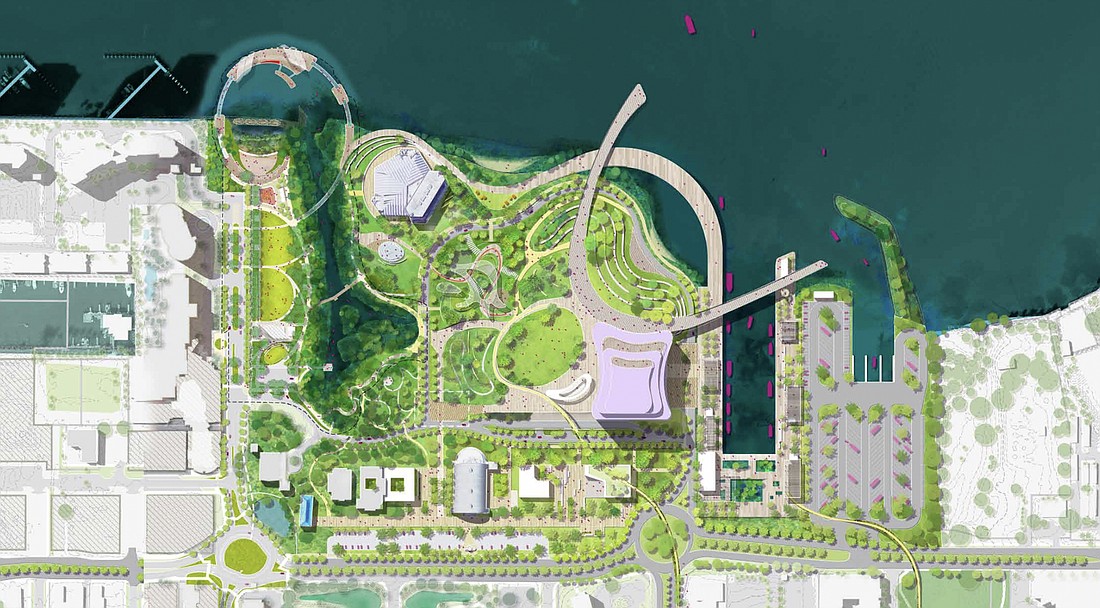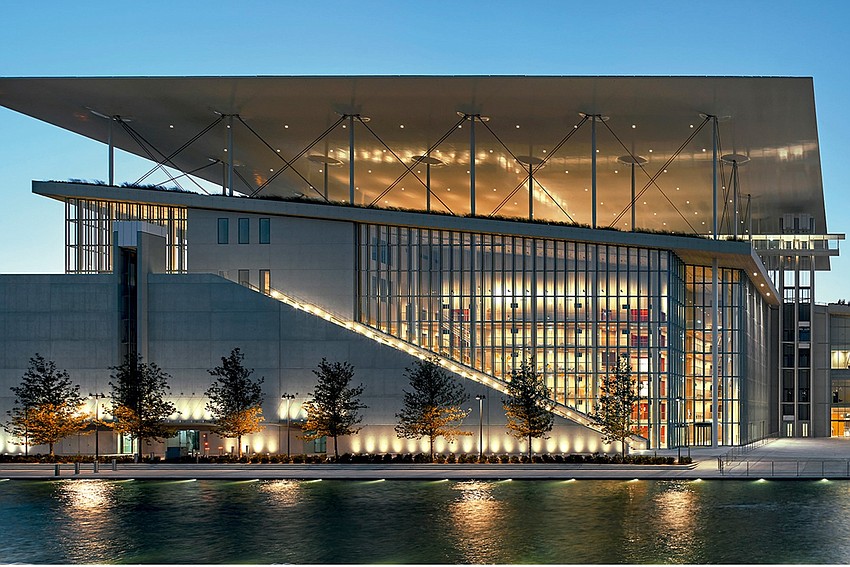- May 16, 2024
-
-
Loading

Loading

It’s like 2017 all over again with city and county commissioners squarely on opposite sides of funding decisions for a dedicated district in downtown Sarasota.
That’s when a 30-year downtown community redevelopment agency expired — which can largely be credited for the transformation of downtown — with a 50% earmark of property tax dollars collected there used for that purpose.
It’s the year to which former Bay Park Conservancy Chief Operating Officer Bill Waddill draws a comparison when it comes to dedicating tax increment financing revenues to the development of The Bay Park, and within it a new Sarasota Performing Arts Center.
It’s also the year Waddill, AG Lafley and other leaders of the Sarasota Bayfront Planning Organization, now the BPC, were fully immersed in their work to bring the city and county together again to fund half of The Bay Park.
The TIF dedicates increased revenue from rising property values within a given boundary, in this case neighborhoods immediately north, south and east of the 53-acre city property. To get there required rebuilding trust between the city and county governments to agree to allocate TIF revenues to build out The Bay.
It was evident during the April 24 meeting of the Bay Park Improvement Board — consisting of city commissioners Debbie Trice and Mayor Liz Alpert, county commissioners Mark Smith and Ron Cutsinger, and at-large community member Jon Thaxton — that the lack of trust persists.
And it showed nothing had changed among the members since their March 29 meeting.
Although a motion to recommend approval of up to $44 million for a design agreement between the city and Italy-based architecture firm Renzo Piano Building Workshop was passed, it was by a 3-2 margin with Cutsinger and Smith opposed. That advances the request to the City Commission, where approval is expected, and the Sarasota Board of County Commissioners, where it’s doubtful.
Under an agreement between the city and the Sarasota Performing Arts Foundation, all capital expenditures for a new SPAC are to be divided equally among the public and private sectors. Of the $44 million, if that is indeed the spend for those services, $11 million would come each from city and county TIF revenues, and $22 million from the foundation.
But only if both governmental bodies agreed. Both Cutsinger and Smith said they need more details before they can support the architecture agreement.
“If I'm going to approve a project or look forward to approving a project that may be $250 million or $300 million, before I get into that I want a lot more information,” Cutsinger said. “I want to not spend $22 million on a project that may not go forward unless I know what I'm getting into ahead of time. This is not ready for me.”
City Manager Marlon Brown countered that the details Cutsinger wants will not be available until the architect is actually on board and can provide an estimate for the project, which will take several months.
“We're not spending $22 million right out of the box. There are the five stopping points,” said Alpert. “This is just basically to get the process started. But to have the funding in place, to know that it can be paid for if it keeps moving forward. It can be stopped if it's determined that this is just going to be too much for whatever reason. Otherwise there's no way to estimate this.”
Waddill has seen all this before.
He has since left the BPC in an official capacity but remains an active advocate of The Bay and SPAC.
The population of the county is 10 times that of the city, therefore 10 times the number of constituents, he said. And if the TIF didn’t exist, the incremental tax revenue generated by new development and rising property values in The Quay, the Rosemary District and other properties surrounding The Bay would instead be spread across the entire county.
Regardless of political implications, that revenue, if spent, must occur within the taxing district either directly within the boundaries of The Bay or for improvements associated with access to the park such as streets, sidewalks and other enhancements.
Although the TIF funds can be spent to fund a portion of the SPAC, it is not a requirement. That’s where the county and the city are at loggerheads, at least for now.
Waddill said he isn’t surprised.
“They're going to act in what they think the best interests of their constituents are, which are the whole county,” Waddill said. “It's incumbent on us to do the hard work to make a case and to build a community consensus on what's a wise investment for the next 75 or 100 years, and then make that case to the county commissioners. We’re not ready to do that yet.
“We're at year 2017 in The Bay Park initiative, and so we got we've got hard work to do. But we know if we follow a similar trajectory, I'm confident we can build a consensus.”
“I think once Renzo’s contract is signed people are going to really rally behind the project,” said SPAF CEO Tania Castroverde Moskalenko. “I think people will get excited about it once we have designs to show once we can really start talking publicly about it. Right now we're stuck in the dollars and so it's difficult to talk about.”
Meanwhile, to keep the project on track and Renzo Piano at the table, decisions will need to be made about funding the architect contract without the county’s TIF dollars. Although the total ask was up to $44 million, only about $8 million of that is needed at this time. Of that total, Renzo Piano will be responsible for hiring an architect of record, engineering firms, etc., and then paying them.

The balance — the actual cost is typically 20% of the hard costs of the project, which as yet is unknown — may be approved in phases going forward by both the city and county boards.
In the interim that initial $8 million must come from the city’s TIF funds, capped at $4 million, and the other half from the SPAF, unless the city were to allocate some money from the general fund. Going forward, should the county continue to not support the SPAC with TIF dollars, the city and the Sarasota Performing Arts Foundation could find themselves on the hook for the entire amount if it were to move forward. How the county would choose to use the TIF funds, which can only be spent in the TIF district from which it is collected, would be a question.
Current projections are for the TIF district to raise more than $329 million by the time it expires in 2049. That’s $229 million more than the projected $100 million in TIF funding earmarked for the rest of The Bay Park, which is estimated at $200 million to complete.
“My recommendation to the Board of County Commissioners is not to put money towards this,” Smith said regarding the architect contract. "However, if the Foundation and the City Commission want to pick up the tab, by all means.”